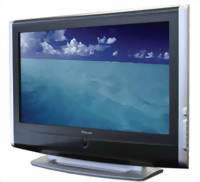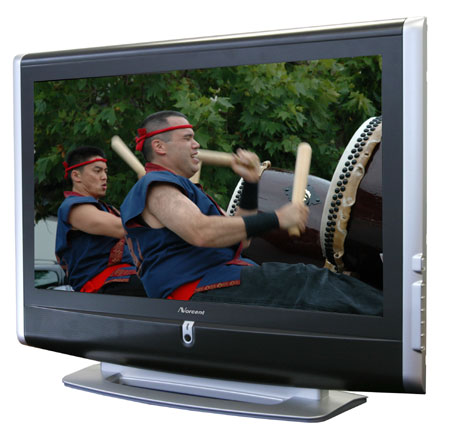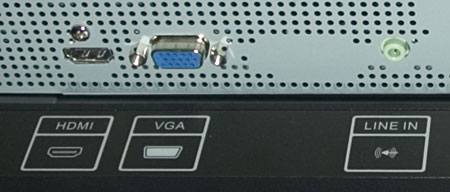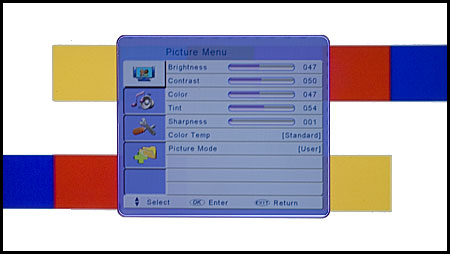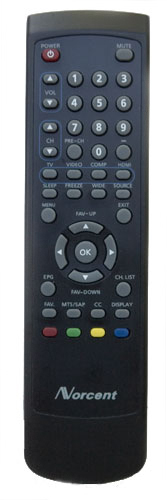
|
|
 |

|


Dick De Jong August 17, 2006 HDTV Solutions Norcent may not be the first name that rolls off your frontal lobe when you are thinking of TVs, but if its LT-3250 is any indication, Norcent is a brand name to file away in the old gray matter. From the first day of reviewing this 32" LCD, I was impressed with the richness of its high definition image. And the more I ran it through its paces with an assortment of video sources, HD and SD, I came to appreciate its versatility. The LT-3250 LCD TV, one of Norcent's newest members in their LCD and Plasma lineup, boasts stats that hit the industry's current sweet spot for 32" units under $1000: a resolution of 1366 x 768, with an 8 ms response time, and a 1000:1 contrast ratio. This HDTV is equipped with a digital (ATSC) tuner so you can receive over-the-air (OTA) HD programs, which are broadcast by your local stations. (Of course, depending on your proximity to the station's antenna, you may need an outdoor antenna of your own. Ah, those were the days.) For a majority of you though, I would assume that your primary source will be a cable or satellite provider; and then, be assured that the LT-3250's coterie of connections includes an HDMI (with HDCP support) input. Out of the Box
I am hearing that one of the reasons that flat screens are finding their way into our hearts and homes faster than predicted is because they appeal to our more refined sensibilities – whether that is represented by the female in the household or the metrosexual. Since the LT-3250 eschews the common minimalist look, I would suggest that you let your design arbiter study this façade before making any final purchase plans. For myself, I applaud Norcent for being even this little bit adventuresome.
On the back of the TV, the usual suspects are lurking around in the shadows of the chassis. From the left, the lineup begins with the HDMI and VGA (15 pin D-Sub) connections, as well as a PC audio input (stereo mini-phone jack). Then come two sets of Component, (PrPbY), video inputs with matching stereo audio (RCA) jacks and two sets of Composite video in connections that include S Video. Finally, one antenna input for Digital TV and another for analog complete the complement. Note that this TV does not provide audio outputs. If you are receiving your signal into the TV directly from an antenna, you cannot route the audio through the TV to a separate sound system.
Of course, all of these connectors are facing down forcing me to sacrifice my sacroiliac every time I want to switch out HDMI cables. To add insult to back ache, if you look at the photo, you'll notice that the HDMI input on the LT-3250 is extremely close to the back of the TV, which leaves me almost no room to maneuver my longer HDMI cable that has a bulbous ferrite core near the connector. It fits, but it's a struggle. I talked to Ted Kao, the Product Manager at Norcent, and he said they are aware of the situation and I would expect to see a little more wiggle room in future models. But if you buy this TV, you might want to purchase one of those svelte ribbon HDMI cables. Speaking of HDMI, I ran into another situation that you need to be aware of with this unit. The Oppo OPDV971H DVD player that I use to calibrate the TVs has a DVI out, and not an HDMI. Since DVI does not carry audio, I need to transmit the audio to the TV through separate cables. The problem is the Norcent LT-3250 does not have matching audio inputs for the HDMI connection. (It does for the VGA in.) Therefore, if you are watching an HDMI source, the only way that you'll hear audio on the TV is if it is coming through the HDMI cable. Considering that the LT-3250 only brandishes 10-watt speakers, you probably will want to route all your audio through a separate sound system anyway. If you don't have one and need to use a DVI to HDMI connection, you better turn on closed captioning or learn lip reading. The other alternative is to connect to this unit with component cables that do have dedicated audio inputs. Setup Luckily the outcome of my calibration was rewarding because the aggravation endured in the process was unnecessary. As you can see from the image, the bright purple On Screen Display is quite intrusive, especially when you are trying to adjust the test pattern that is veiled below it.
You cannot move or minimize the OSD. It just sits there and mocks you. Therefore, the tweaking tango goes something like this: You make an adjustment on the menu, (1, 2), exit out so you can see the full unobstructed screen, (3, 4), click at least three more times to get back to where you were in the menu, and keep tweaking, (5, 6, 7, 8). Cha-cha-cha. Normally, each input menu retains its individual settings. And indeed, that is the case for the Component, Composite, and HDMI menus. Any change you make in one menu does not affect the setting in another menu. Though I did find that if I adjusted a value in the HDMI menu, for example moving Brightness down from 50 to 47, the Brightness value in the VGA menu would change accordingly. The reverse is also true, if you slide Contrast from 50 to 52 in the VGA OSD, Contrast shifts to that number in the HDMI controls. I am not sure if this situation is an anomaly or an intentional design decision; but if you are using the monitor for both HDMI and VGA signals, you may have to re-tweak every time you switch from one to the other. The LT-3250 does not offer all the fine adjustments that a dedicated videophile may desire. Note there is no Backlight control and no separate R, G, and B sliders. But for most normal viewers, the controls provided are more than sufficient to tune in a very acceptable picture. Norcent also has adopted that back-to-basics tenet with the features it offers. For TV viewing, the unit has Auto Scan, a DTV Electronic Program Guide, a Favorites list, and the V Chip with parental controls. But the LT-3250 does not have PIP or POP. If you are an inveterate multi-viewer, turn your binocular vision elsewhere.
The remote control is also no nonsense. It even double duties on some of the buttons. For example, if you want to select the VGA input, you push the HDMI button, which cycles between HDMI and VGA. The remote is not backlit and the buttons could be a bit bigger and spaced out a little more. I'm not sure why designers of remote controls ignore that open patch of real estate at the bottom of the device. I imagine it has something to do with ergonomics, but having to navigate bunched up buttons is no day at the beach. Real World Tests The pleasant surprise was how well the LT-3250 handled standard definition video. I usually wince when I turn to an SD channel, but this TV almost made the ordeal enjoyable. Indeed, viewing Amelie broadcast on IFC was a pleasure because there were very few telltale SD artifacts. (Though, watching the radiant Audrey Tautou is always a delight.) That is not to say that the LT-3250 is an SD panacea. It doesn't take much channel surfing to ferret out a ratty program. But since the Norcent generally dealt with SD admirably, I tended to blame any shabby looking shows on the broadcaster and not the TV. As for DVD playback, The Harmonists displayed the same rich, full color that was exhibited with the best HD sources. The LT-3250 does have a VGA connection and I hooked it up to a Dell Inspiron laptop. Photoshop looked good and the Internet was fine. But for some undelineated feeling, I think if you are looking for a computer monitor, you would be better served elsewhere. Conclusion |
Bookmark:
![]() del.icio.us
del.icio.us
![]() Reddit
Reddit
![]() Google
Google
| Send this Page | Print this Page | Report Errors |




